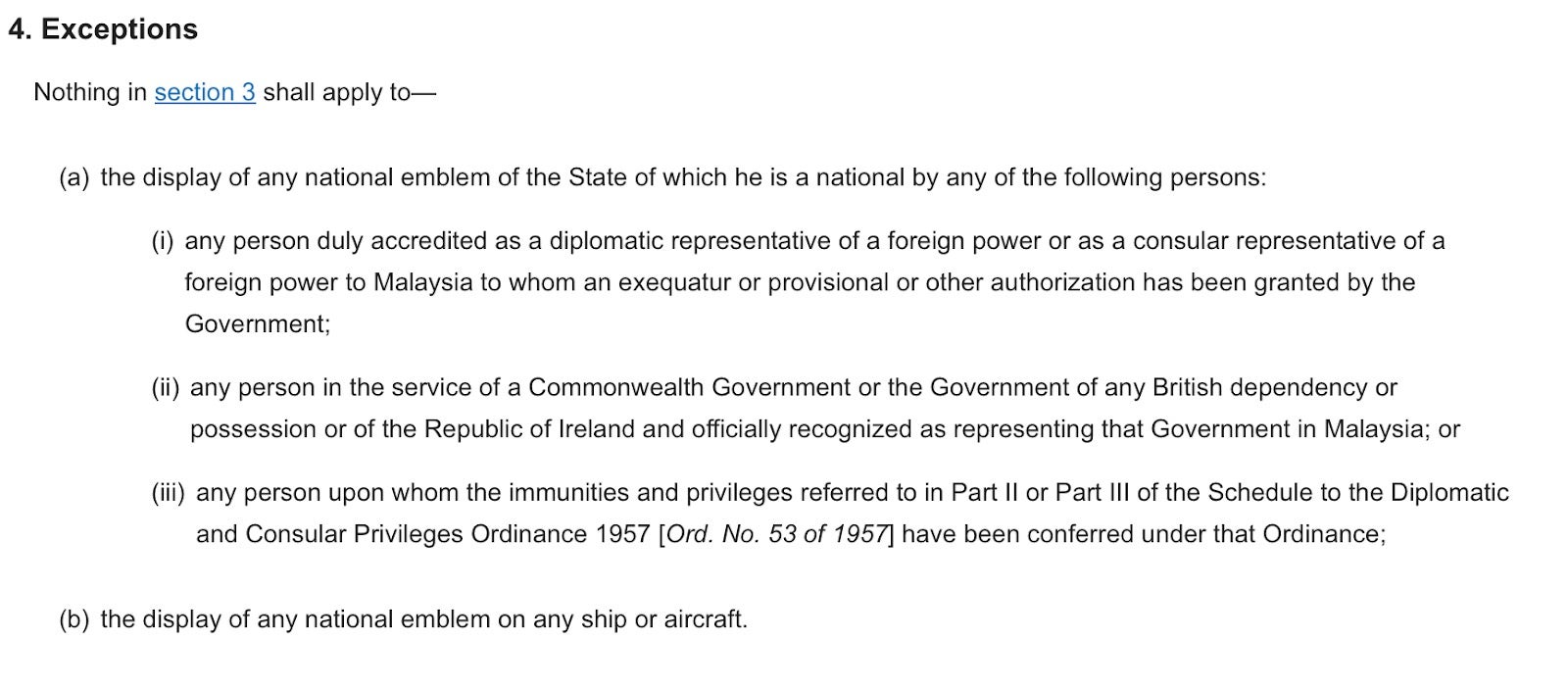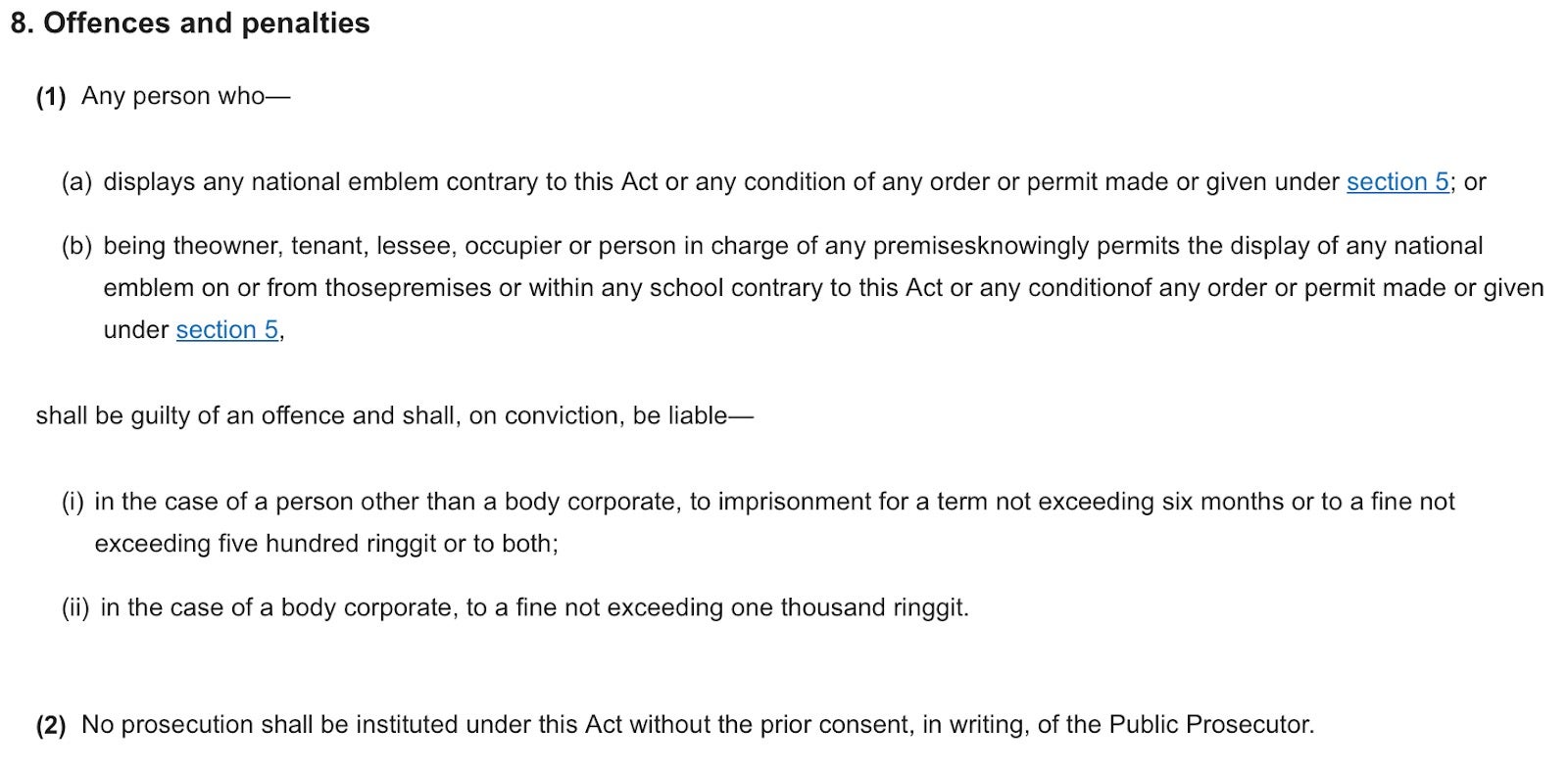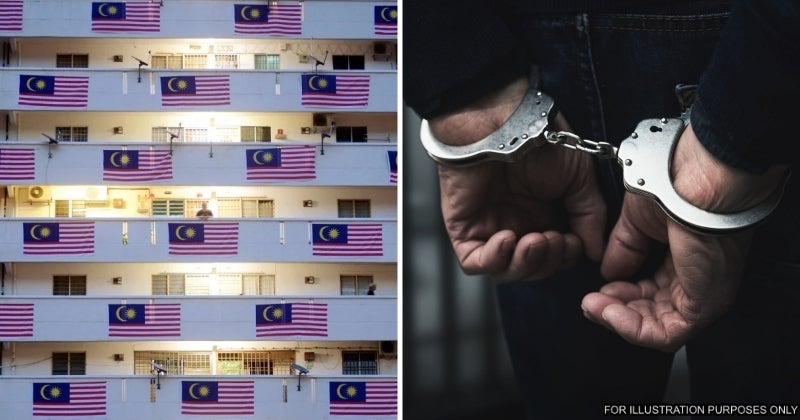Previously, we shared how Singaporeans condemned the act of an HDB flat resident in Yishun Central who put up a Malaysian flag among a sea of Singaporean flags during the Republic’s National Day celebration back in August.
Furthermore, it was also revealed that such an act is actually against the law in Singapore, as the country’s Foreign National Emblems (Control of Display) Act 1949 prohibits the public display of a foreign national emblem, with offenders facing up to 6 months jail, up to SGD500 fine or both.

Malaysia has an identical law that prohibits the public display of country flags other than the Jalur Gemilang
Well, did you know that Malaysia actually has an almost identical law that prohibits any individuals in our country, except for a few exceptions, from displaying country flags other than the Jalur Gemilang publicly?
Called the National Emblems (Control of Display) Act 1949, Section 3(1) of the legislation expressly prohibits any person from displaying in public, or at or within any school, any ‘national emblem’.

For illustration purposes
Speaking to WORLD OF BUZZ, Malaysian lawyer Ahmad Danial bin Mohd Azlan, a partner of Kuala Lumpur-based law firm ADIL Legal, explained that what is meant by ‘national emblem’ is defined under Section 2 of the same Act to be:
- Any flag, banner or other emblem being or purporting to be the flag, banner or other emblem of any country other than Malaysia and any states included in Malaysia
- A flag, banner or other emblem of any political organisation claiming to be a national movement in any State
As for what is meant by ‘public display’, Danial elaborated that according to the provision, it includes:
- Displaying on any road, street, bridge, passage, footway or place over which the public or any class of the public have the right of way or access
- Displaying in such a manner as to be visible from any such road, bridge, passage, footway or place by any member of the public
Instances where public display of a ‘national emblem’ is allowed
However, there are a few exceptions to this, as prescribed under Section 4 of the National Emblems (Control of Display) Act 1949, below:

The exceptions include the public display of a national anthem if the individual is a citizen of said country, and:
- They are accredited as a diplomatic representative or consular representatives of the country to Malaysia, to whom an exequatur or provisional or other authorisation has been granted by the Malaysian Government
- They are in the service of a Commonwealth Government or the Government of any British dependency or possession or of the Republic of Ireland and officially recognised as representing that Government in Malaysia
- They possess immunities and privileges referred to in Part II or Part III of the Schedule of the Diplomatic and Consular Privileges Ordinance 1957

For illustration purposes
Besides that, the display of any national emblem on any ship or aircraft is also allowed. Beyond that, Section 5 of the Act prescribes that the Home Minister may, by order published in the Gazette or by a permit in writing, allow an individual to display a national emblem in public.
You can be arrested without a warrant and face up to 6 months in jail for offences under the Act
Danial added that those who display a national emblem in public without the exceptions and exemptions given in Sections 4 and 5 of the Act may be charged under Section 8 of the Act below:

Should the offender be an individual, they may face up to 6 months in jail, up to RM500 fine or both if convicted. Should the offender be a body corporate, they may face a fine of up to RM1,000 if convicted.
Furthermore, Section 8(1)(b) of the Act prescribes that the owner, tenant, lessee, occupier or person in charge of any premises can also be charged under the Act for allowing the public display of a national emblem.

However, any prosecution under this provision must first get the prior consent, in writing, of the Public Prosecutor.
In addition, Section 6 of the Act below gives the power to the police to arrest without a warrant any person whom they have reasonable cause to believe has committed or is committing an offence under the National Emblems (Control of Display) Act 1949.

Danial further elaborated that Section 7 of the Act below allows the police to enter any premises where any national emblem is displayed against what is prescribed under this Act, in which they have reasonable cause to believe that an offence against the Act is being or has been committed.
Moreover, the provision allows the police to search the premises and seize any article they believe to be evidence of an offence under the Act.

So, what do you guys think of the National Emblems (Control of Display) Act 1949? Have you heard about the law before or seen it in action?
Share your thoughts and experiences with us in the comments!










































